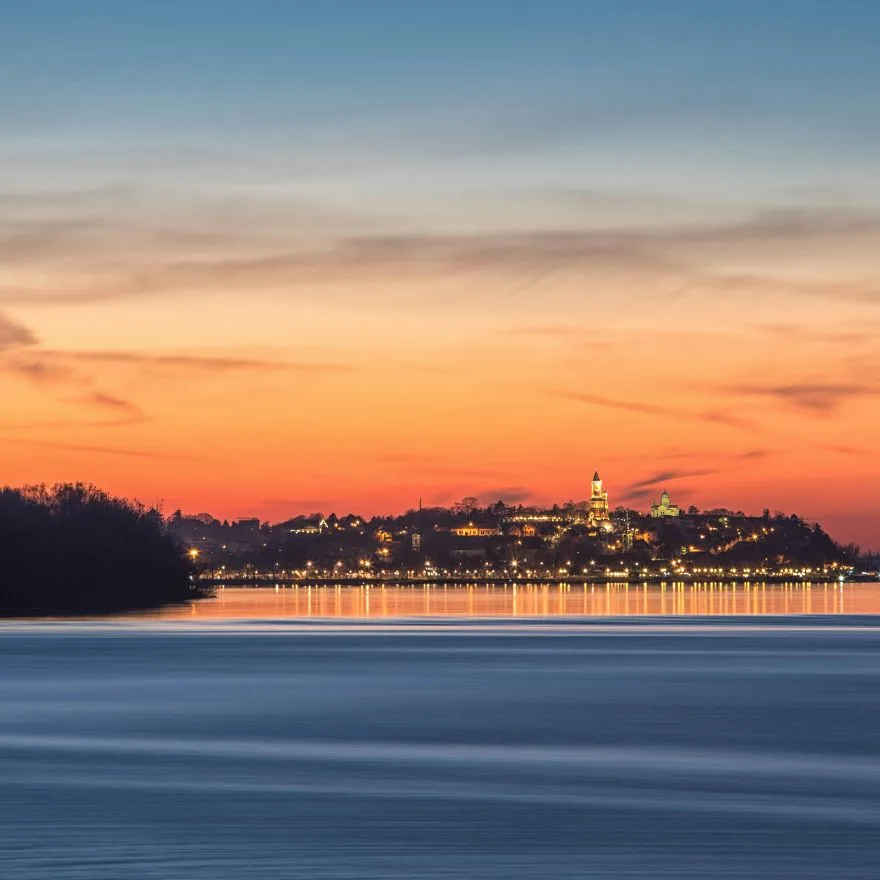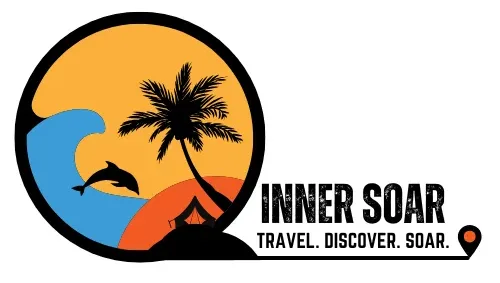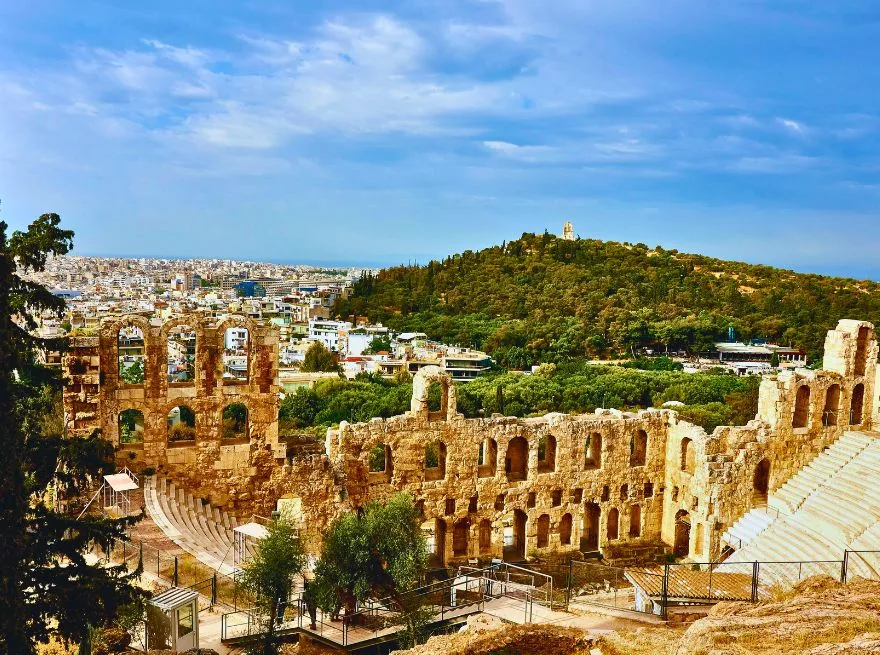
As I stand atop the ancient walls of Belgrade Fortress, watching the sun dissolve into amber hues over the confluence of the Sava and Danube, I begin to understand why this city has captivated travelers, conquerors, and dreamers for more than two millennia. The rivers shimmer like liquid gold, carrying centuries of stories downstream — tales of resilience, music, and reinvention. Belgrade, Serbia’s lively capital, is not just a destination; it is a living, breathing being — a place where history and modern rhythm waltz in eternal harmony.
Beneath its shifting light, Belgrade reveals its contradictions: a city both ancient and young, gritty and graceful, proud and playful. It has survived empires, wars, and rebirths, each leaving traces that now form a vibrant mosaic of culture and emotion. To walk through Belgrade is to dance through time itself — where every street corner hums with memory, every melody carries a fragment of the Balkan soul.
The White City’s Story
Belgrade’s roots reach back more than 7,000 years, making it one of Europe’s oldest continuously inhabited cities. The name “Beograd,” meaning White City, comes from the gleaming limestone walls that once shone like a beacon to travelers along the ancient trade routes between East and West.
This city has been destroyed and rebuilt 44 times — seized by Celts, Romans, Ottomans, and Austro-Hungarians — and yet it always rises, stronger and more soulful. Each reconstruction added another note to its song, another color to its mural. The result? A city that doesn’t just tell history — it performs it.
From Ottoman mosques to Art Nouveau façades, from socialist blocks to sleek new towers, Belgrade wears its past and present side by side, like partners in an eternal dance.
When to Embrace Belgrade’s Spirit
Belgrade’s charm shifts with the seasons, each bringing its own rhythm and mood.
- Spring (April to June) paints the city in soft greens and floral pastels. Cafés spill onto sidewalks, laughter floats through the air, and locals rediscover the joy of strolling by the riverbanks.
- Autumn (September to October) cloaks Belgrade in amber light and crisp air — the perfect time to explore without the summer crowds. It’s also when rakija (fruit brandy) flows generously, and street musicians fill the evenings with song.
- Summer burns with energy. The city sizzles — literally and metaphorically — with music festivals, riverside clubs, and floating splavovi (boat bars) that pulse with life until dawn.
- Winter wraps Belgrade in snow and introspection. The days are short, but the warmth of kafanas (traditional taverns) and the aroma of roasted chestnuts make it feel like home.
Whenever you visit, Belgrade finds a way to pull you in — sometimes with fireworks, sometimes with quiet whispers.
5 Must-Visit Places That Will Capture Your Soul
1. Kalemegdan Fortress and Park
At the confluence of the Sava and Danube lies Kalemegdan, Belgrade’s crown jewel and its oldest storyteller. Once a mighty military fort, now a peaceful park, it has seen everything — from medieval duels to modern picnics.
Walk its ramparts at sunset when the city glows below and the rivers meet in shimmering embrace. Listen to the rustle of the trees, the hum of street musicians, the laughter of couples. You’ll feel the weight of history dissolve into serenity.
Beneath the fortress lie ancient Roman ruins, secret tunnels, and even a small military museum. Yet it’s the view — wide, timeless, unbroken — that stays with you, long after you’ve left.
2. Skadarlija Quarter – Bohemia Alive
Just a short walk from Republic Square, Skadarlija is Belgrade’s bohemian heart — a cobblestone dream where the 19th century still lingers. Once home to poets, painters, and free spirits, today it remains a celebration of art, wine, and conversation.
Flower boxes spill color from wrought-iron balconies, accordion melodies drift through the evening air, and waiters in traditional vests carry platters of sizzling ćevapi and roasted peppers.
Choose a table at one of the timeless kafanas — Tri Šešira, Dva Jelena, or Ima Dana — and order a glass of plum rakija. By the second sip, you’ll feel part of a centuries-old story where laughter is the language and time moves to its own rhythm.
3. Saint Sava Temple – The White Heart of Faith
Visible from nearly every corner of the city, the Temple of Saint Sava rises like a marble crown over Belgrade. Its vast white domes and golden crosses gleam against the skyline, symbolizing faith, endurance, and rebirth.
Step inside, and the sheer scale leaves you breathless — mosaics shimmer like galaxies across the domed ceilings, and silence hums with reverence. Whether you are religious or not, it’s impossible not to feel awe here.
Outside, the square comes alive with fountains and families strolling. The scent of roasted corn and sweet pastries mingles with the sound of children playing. Even holiness feels human in Belgrade.
4. Nikola Tesla Museum – Sparks of Genius
In a quiet residential street stands a 1920s villa that guards the legacy of one of humanity’s greatest minds — Nikola Tesla.
The museum honors the Serbian-born inventor whose ideas electrified the modern world. Interactive exhibits recreate his experiments, while original documents and urns hold traces of his extraordinary life.
Here, science feels sacred. You can almost hear Tesla whispering that imagination is the spark that lights the future. It’s a reminder that Belgrade, though rooted in history, forever reaches forward.
5. Zemun Quay – A Different Rhythm
Across the river lies Zemun, once a separate town, now a beloved Belgrade neighborhood. Its river promenade feels almost Mediterranean — pastel houses, fishermen mending nets, families savoring grilled perch at waterside taverns.
Climb the Gardoš Tower, built in 1896, for sweeping views of the Danube and the city beyond. Up there, with the wind in your hair and the bells tolling below, you’ll see why locals call this place “Belgrade’s balcony.”
Rent a bicycle or take a leisurely walk along the quay, stopping for coffee or a glass of local wine. As boats glide by, you’ll feel the city’s pulse slow down — still beating, but softer now, more like a lullaby.
To truly feel the pulse of Belgrade — and the broader Balkan rhythm — venture beyond its center. Having your own set of wheels transforms the experience.
Through DiscoverCars, travelers can easily compare and book vehicles suited for their route — whether it’s a leisurely drive along the Danube, a weekend escape to the rolling Fruška Gora vineyards, or a spontaneous road trip to Novi Sad, Serbia’s second city.
Beyond the city limits, the landscape opens like a poem: sunflower fields, monasteries tucked in hills, villages where time has forgotten to hurry. Let the road guide you, and the Balkans will reveal their quiet, untamed beauty.
Savoring Serbian Soul Food
Belgrade’s food is the language of its soul — hearty, passionate, and generous. Influenced by Ottoman, Hungarian, and Slavic traditions, Serbian cuisine celebrates flavor and friendship in equal measure.
Start your morning with a burek — flaky, buttery pastry filled with cheese or meat, best enjoyed warm with a cup of tangy yogurt. Lunch might mean ćevapi, grilled minced meat rolls served with fresh somun bread, creamy kajmak, and smoky ajvar.
If you crave comfort, order sarma (cabbage rolls stuffed with minced meat and rice) or karađorđeva šnicla (rolled schnitzel filled with kajmak). Vegetarians will love prebranac, a slow-baked bean stew, or ajvar spread on warm bread.
For dessert, indulge in reforma torta, a chocolate-and-walnut dream, or baklava dripping with honey.
And then, of course, there’s coffee — strong, dark, and unhurried. In Belgrade, coffee isn’t a caffeine fix; it’s a ritual. People sit for hours discussing life, art, and love over small porcelain cups. To rush coffee here would be to miss the point entirely.
Travel Tips for Soaring Smoothly
- Getting Around: Belgrade’s public transport is broad but tricky for newcomers. Use the Moovit app for real-time routes, or hop in official taxis (marked “TX”) to avoid overcharging. The CarGo app, Serbia’s local version of ride-sharing, is also reliable.
- Language & Culture: Most younger Belgradians speak English, but learning a few Serbian phrases earns instant warmth. Try “Hvala” (thank you) or “Molim” (please). The local hospitality — gostoprimstvo — is legendary; accept coffee when it’s offered, and you’ll leave with a new friend.
- Money Matters: The local currency is the Serbian Dinar (RSD). While some tourist spots accept euros, paying in dinars gives better value. ATMs are common, and cards are widely accepted.
- Coffee Culture: Coffee isn’t just a drink here—it’s a social institution. Don’t rush your coffee; it’s meant to be savored over long conversations.
- Safety: Belgrade is among Europe’s safer capitals. Common sense suffices: keep valuables close in crowded areas and confirm taxi rates before starting your ride.
- Local Etiquette: Don’t be surprised if strangers start chatting at cafés or on the tram — connection is a way of life here. And when someone raises a glass and says “Živeli!” (cheers), raise yours, too — it’s a toast to life itself.
Staying Connected
As you wander Belgrade—whether sipping espresso at a riverside kafana or getting lost in the streets of Skadarlija—reliable mobile data is essential for navigating, sharing Instagram-worthy moments, or looking up that tucked-away jazz bar. That’s why I recommend Drimsim. With coverage in over 190 countries, Drimsim works across borders without swapping SIMs or dealing with expensive roaming plans. For a one-time €10 SIM or quick eSIM setup, you pay only for the data you use—often at rates as low as €0.01 per MB—and manage everything through its handy app (top-ups, usage tracking, support included). It’s a traveler’s ally for seamless connectivity—grab yours here

The Spirit of Belgrade
So what truly defines Belgrade?
It’s not just the architecture or cuisine, nor even the rivers that cradle it. It’s something invisible yet unmistakable — a spirit that thrives on resilience, humor, and heart.
You’ll find it in the late-night laughter spilling from a kafana. In the way an old man plays the accordion on a bridge, his hat filled with coins and stories. In the graffiti that turns gray walls into poems.
Belgrade has known loss and war, yet it never surrendered its rhythm. Instead, it dances — fiercely, freely, defiantly. The city reminds us that joy is an act of resistance, that music can heal, that the human spirit always rises.
As my time in Belgrade fades into twilight, I return once more to Kalemegdan’s walls. The rivers merge below me, their waters carrying whispers of the city’s past. The air is thick with memory and promise. I realize then that some cities don’t just enter your itinerary — they enter your bloodstream.
Belgrade is one of them.
So come not merely as a tourist, but as a seeker — of stories, of rhythm, of resilience. Let Belgrade show you how to move through life with open arms and an unbreakable beat.
Because here, in this city of scars and songs, every dance — like every traveler — begins anew.


